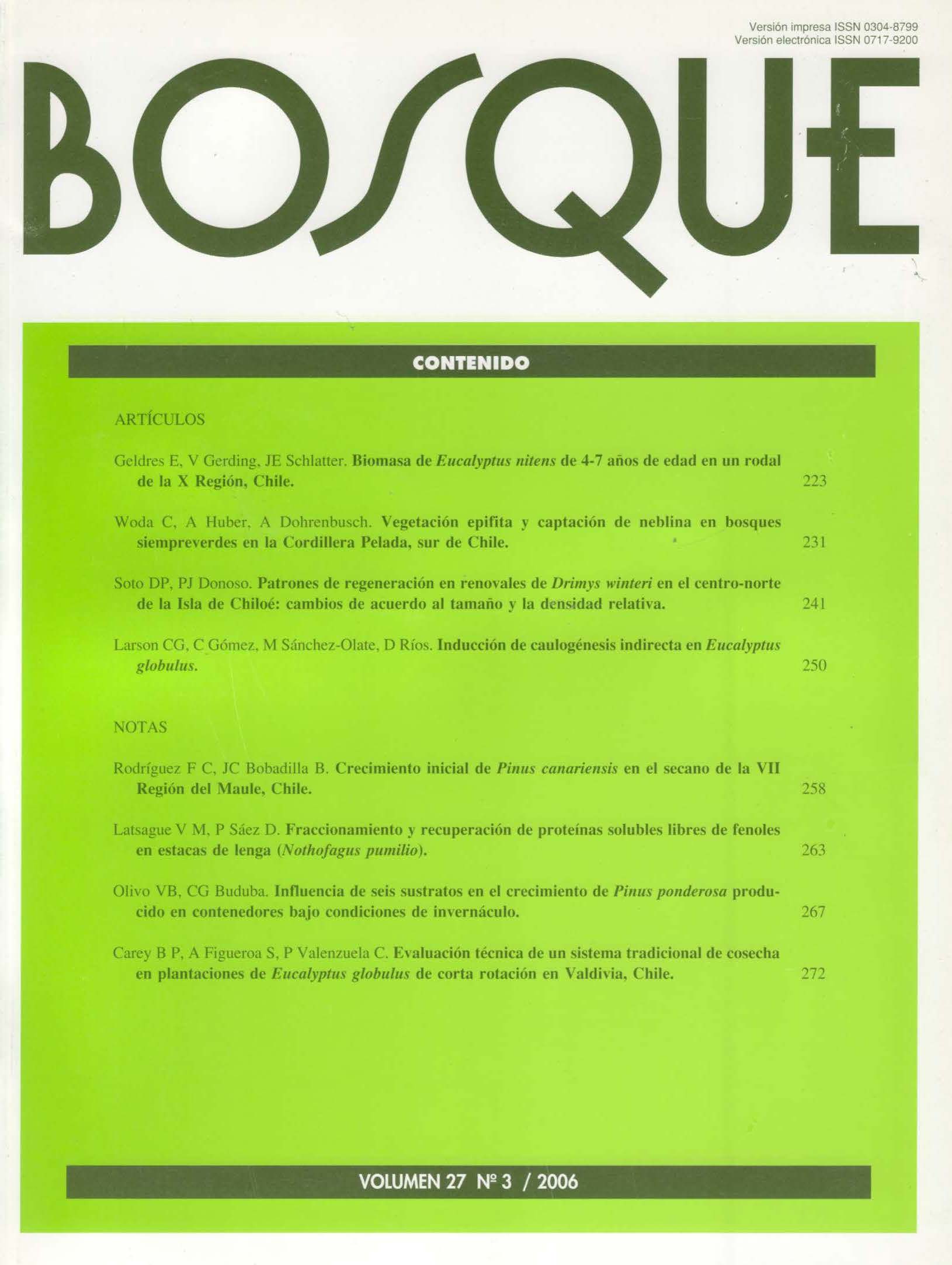Technical evaluation of a traditional harvesting system in short rotation age of Eucalyptus globulus stands in Valdivia, Chile
Main Article Content
Abstract
A traditional harvesting system, with hand fell and oxen logging was technically evaluated in a clear-cut of Eucalyptus globulus. The study area is a short rotation age plantation stand with 0.15 m3/tree located in Valdivia, south of Chile. The activities were carried out by a crew of ten forest workers using chainsaw and hand-tools, who executed simultaneously six subsystems (felling, delimbing, logging, bucking, debarking and stacking). Felling and bucking were carried out by means of a chainsaw Sthil 017; the production rates observed were 7.1 and 9.2 m3/h respectively. Delimbing, debarking and stacking were executed with hand tools, and the production rate observed was 20.9 m3/h in delimbing and 8.3 and 10.3 m3/h in debarking and stacking. In the logging phase two yokes of oxen were used, the average logging distance was 50 m in favourable slopes conditions. A production rate of 1.9 m3/h per yoke of oxen was observed, this low rate was a consequence of dense underbrush in the study area. The study also considers a non-productive time (delays) analysis. A high frequency of delays because of resting times was observed. This is a characteristic of a labour intensive system based on the use of hand tools. These delays can be minimized by improving the working method and applying a training program.

